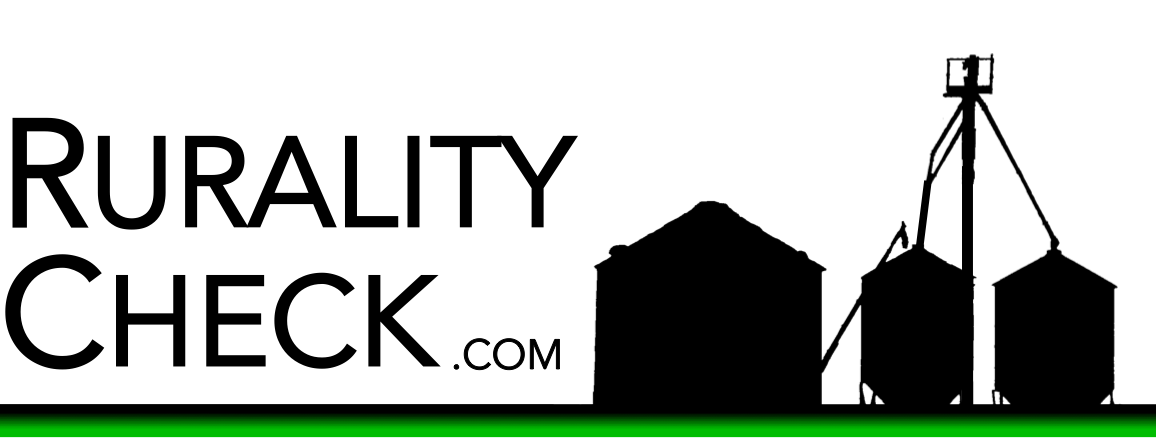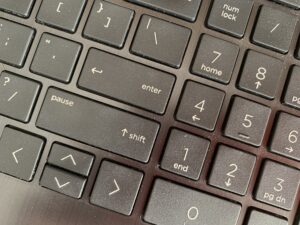
The light wasn’t turning. At least I was pretty sure, as the blizzard had spat snow on the red, yellow, and green circles, so the red light was more of a pink glow. The pastel pink seemed less commanding than the usual harsh red; instead of shouting “STOP,” it kind of murmured “just hold on, okay?”
It had been this warmish color for at least a minute. I hadn’t seen a person, or really anything besides blowing snow, for a long time. Which made sense, as Northerners know better than to venture out in heavy snow before dawn, at least as long as they’re not working the early shift at a restaurant that barely ever closes, for example. So there I sat, staring at a stoplight telling me to stop. Or keep holding on, anyway.
So I went.
There used to be a stop sign there, at the intersection of those two county roads. The stop sign never malfunctioned in a blizzard. Even when it was covered with snow, everyone knew what it was. They stopped, and then they went on. Life went on.
The stoplight stopped because something got stuck, or probably frozen, or at least covered with snow. But this isn’t about technology, really. In fact, stoplight technology seems to have gotten a lot better, with the sensors and the timing making them nearly painless, cost aside. It’s easy, and probably accurate, to blame technology a lot of the time for our 21st-century problems, but our point here isn’t that we rely too much on machines.
Inasmuch as there’s a difference, the point is that we’ve stopped relying on ourselves. And noticing each other.
People approach stop signs differently than they approach stoplights. When we come to stop signs, we slow down. We’re going to stop, or at least slow down to second gear, period. It is not a mystery. Accidents can occur, but they are often fender-benders, literally.
With a stoplight, though, we try to game the system. Will it change? Can I make it? 100 feet before a green stoplight, we all make a decision either to hit the gas or to brake. If yellow comes even a split-second after that decision, we hit the gas even harder, trying to beat the light.
The result? In a grand bit of irony, cars go faster in the intersection than they do on the rest of the road. This is despite the fact that the intersection is the most dangerous place on the road, which is why the intersection warranted a stoplight in the first place.
So, instead of stopping, we’re going. Scratch that—we’re actually accelerating.
Accelerating at the stoplight. Asinine.
When an accident happens at the stop(accelerate?)light, it’s no mere fender-bender, either. It’s a glass-shatterer, a car-totaler, a dealership-money-maker. It’s not a single squad car meandering up, directing traffic, and one officer talking to people leaning against cars, with those people calling parents, worried if someone’s “going to kill me,” one hand on the phone, another with the fingers seemingly stuck forever in the hair above their foreheads, their eyes red from crying.
No, when someone is trying to beat the light at high speed, an accident is an ambulance-and-a-firetruck job, and a tow truck, or maybe two, and the police and a state patrol rerouting traffic blocks away, a carnival of blue and red lights, even more than CNN on election day.
And no one’s worried whether someone is going to “kill” anyone. Someone on the phone, all of a sudden, is just glad you’re alive enough to call at all.
The idea of “beating the light” is exactly the point here. When you decide to hit the gas 100 feet away, you aren’t thinking about beating the person already sitting at the red light, or hitting that person. You’re thinking about “someone” hitting you, but you don’t know who. You have no idea whether vehicles are already at the intersection, whether they’re rolling up to the light, and trying to take off on green, drag-racing style. You’re not even sure whether there’s anyone around you at all.
It’s just you and the light, you against the light.
Not so with a stop sign. When you come to a stop sign, your left foot hovers over the clutch. Your eyes are constantly moving left and right, left and right. You know who’s coming, what kind of car is coming, and how fast. And how fast they’re stopping. Or not stopping. And whether they’re going to beat you there. When you get to the stop sign, you might even make eye contact with other drivers, and maybe give a quick, two-finger wave letting someone go ahead. There’s an interaction at a stop sign.
At a stop sign, your eyes are up. You know, like they should be. Like you want them to be.
What do we do when we pull up to a red light? Our eyes aren’t left or right, or even up. They’re on the radio, or on the kids in the back. Or, more commonly, down in our laps, maybe-just-maybe on the phones we oh-so surely don’t have down there.
Our eyes are not on the intersection, where they should be. Where we want them to be. They’re down, or at least somewhere else.
Until someone honks at us for not noticing the green light, anyway.
Jerk.
This might sound inconsequential, or maybe quaint. On a nice day, or in a mediterranean climate, or in the southern-Californian perfect-o-sphere, maybe it doesn’t matter. It’s fine. Stoplights are fine. But they’re less fine around the edges, when the system gets strained somehow, when things aren’t working perfectly.
Like in a blizzard, when cars slide on ice, careening off each other, like a weird kind of slow-motion game of car billiards, or what would happen if hippos tried figure skating after wine club.
After this slow-motion hippo ice dance, there’s an accident, and that kid with the red eyes on the phone is leaning against his car, saying “But, but, but the light was green, Dad! I promise!” Never mind that you were approaching a frozen intersection at about thirty, and so was the guy with the red light, front wheels locked, half-cocked in two lanes, eyes as big as the phone screen you just checked. “Green light,” the stoplight said. “Go,” that means, you’ve been told. GO.
Maybe in the perfect-o-sphere. But the stoplight doesn’t know how much it snowed last night. The stoplight also doesn’t know it rained first, which froze under the snow, which made it slipperier than last time when it snowed. Which was the second time you’d ever driven, might we add. The stoplight doesn’t know that they haven’t salted yet, either.
That’s what you’re for. You, the human, should know that. You should have seen him sliding. You should have been off the gas not just for 100 feet, but for a quarter-mile. With your eyes up.
“But, but, but…green! I promise!”
The system is strained other times, too, like when a lumber truck is trying to turn at that intersection, and you come screeching up to the light because the yellow light came at 105 feet, not 100. To your left sits a truck as long as your house, blinker on. That blinker’s been on for thirty seconds. He’s been sitting there for thirty seconds. You had no idea. You just pulled up to the light, which told you to stop. And now the truck’s trying to turn, which was going great until you pulled up.
He starts to turn, but you don’t even see him, and you don’t see that you’re in the way of his wide turn, because you’re already on InstaTwit, which is what you do in your lap at red lights. You look up and see a truck grill as wide as your car, which is easy to measure, because it’s directly in front of your car. And your windshield. “Freightliner,” it says. Now you don’t care about red lights, or yellow lights, or green lights, but you do care about white lights, the kind staring you in the face, and the kind that just turned on above your rear bumper as you suddenly found reverse in a flash. Now your eyes are up, way up, looking in the mirror, hoping the guy behind you can back up, hoping the guy behind him can slow down, or hasn’t started checking InstaTwit yet.
Or, now you’re wishing you were at a stop sign, and not a stoplight, because at a stop sign the other cars could see what an idiot you’ve been, and perhaps forgive you, even if mockingly, before letting you go ahead and get yourself out of this mess. But you aren’t at a stop sign—you’re at a stoplight, and so are the other cars, whizzing by, because “But, but…green!”
So instead, you sit there for a light cycle, waiting for what seems like Freightliner forever before you can peel out (Green!) and escape the withering condemnation from on high, meaning the truck’s cab. And you peel out without looking around at the intersection, of course. No eye contact here—withering condemnation, again. Nor do you look around at the next intersection. Instead, you come screeching up to that red light, too, so you can quickly tell everyone the play-by-play of the whole event on InstaTwit in your lap.
If the intersection had had a stop sign, and not a stoplight, this would not have happened. There would have been no light to steal your attention. Your eyes would have been left and right, and then left and right again. You would have seen the truck as big as a house, blinking yellow with a whopping six lights from front bumper to rear, all along the side of the trailer. This would have given you pause. You might have slowed up. If you had a clue, you might have stopped waaay short of the intersection, giving the truck room to turn, just like the old-timers in pickups who have never heard of InstaTwit.
Not that you notice when that does happen. Can’t imagine why.
I get it: stoplights allow many more cars to go through an intersection. They’re efficient. When I lived in an uptown neighborhood in a city you’ve heard of, there was a brutal intersection that stacked up for blocks during rush hour. People would get so sick of waiting for the left-turn arrow that they would keep going long after it turned red, which made people going the other direction sick of waiting for the left-turn arrow, so they would keep going long after it turned red, which… You get it, too. It turned into a big game of Frogger, both for the drivers and the pedestrians, except without the reset button, of course.
But not all intersections are like the one in Uptown.
I grew up in a town without a stoplight. I grew up in a county without a stoplight. During driver’s education we drove an hour to get to a stoplight so we could practice. The instructor would fall asleep on the drive there, across an hour of farmland with no lights at all. Somehow we managed.
I understand that efficiency matters differently in a small system. But I also know that even if we had a stoplight in my hometown, we wouldn’t have tried to “beat the light,” because if we did, we might cut off someone we knew, and we would hear about it. Or our parents would have heard about it, which was probably worse.
The size of the city makes the stoplight necessary, but the anonymity of the city makes it dangerous. And kinda silly, sometimes, like in the blizzard. Maybe there’s an analogy in there somewhere, about our government, or our community: we’re worried about beating the light, no matter who’s around. We’re less worried about who’s around, or how to let them through, or how to give them more room. Our eyes aren’t on each other. They’re down, looking at a machine, or up, looking at a different machine. That has to matter. That has to have its own inefficiency, measured some other way.
The answer, of course, is not to rip out the stoplights and install stop signs, as interesting of an experiment as that would be. Instead, we need to figure out how to drive at stoplights like we’re driving at stop signs. We need to recalculate what real efficiency, all trade-offs considered, looks like.
In a perfect world, maybe it wouldn’t matter. But we don’t live in the perfect-o-sphere. Our system, broadly defined, is strained. Maybe any large system would be. And in a strained system, forfeiting our decision-making can’t be the answer. Real decision-making, not the mere obeying of lighted machines, might mean going on red, like in the blizzard, or stopping on green, like when there’s a truck. Or a sheet of ice.
That doesn’t happen in large systems. It’s easy to point to large institutions—whether governments, religious organizations, or corporations—and blame them for their inflexibility, for taking the decision-making out of people’s hands, or putting decision-making into the hands of policies. Some inflexibility in our lives is probably inevitable, as is the inflexibility of large systems generally. But we could probably strive to participate in smaller, more flexible systems more often than we do. I don’t much care if we start protecting intersections with stop signs instead of stoplights, per se, but just understanding that there is a difference at all between stoplights and stop signs, or between efficiency and flexibility, is the first step to progress.
We do indeed have choices about what kinds of systems we feature in our own lives. We do, in fact, broadly speaking, get to decide where we work, where we live, and what kinds of social, religious, and civic organizations we join. We do, in fact, broadly speaking, get to decide whether we work for small businesses or large ones, or live in big cities or small towns. We do, in fact, get to decide whether to join a small country church with a congregation of fifty or a large city church with PowerPoint presentations during the three different services each Sunday, for example. These choices matter. And because they matter, it seems unfortunate that we seem to keep defaulting to bigger and bigger systems—moving to bigger cities (“for work,” usually, other economic realities be damned), or working at bigger companies (“for my career,” usually, other trade-offs be damned).
These choices matter not only for each of us, but for all of us. The more of us who choose to participate in smaller systems, with more flexibility, more interpersonal interactions, and less bureaucratic frustration, translates to a greater percentage of our society that, it turns out, participates in smaller systems, with more flexibility, with more interpersonal interactions.
This has to matter. The accrual of the interactions at metaphorical stop signs instead of stoplights all day, every day has to have consequences. As more and more of us keep piling into cities, for example, we have to start, or continue, seeing a toll.
To be clear, bigger is not necessarily worse, of course. The unfortunate part isn’t that we’re choosing bigger systems, really, but that some of us are not really choosing at all—we’re just following the path of least resistance, striving for poorly defined progress, defaulting to the easier route, as if easier and bigger are always—always—better.
They’re not. I think we know this. I think we see the difference, too, but either don’t fully realize it or don’t feel empowered to act on it.
Sometimes—sometimes—I think we’re installing stoplights where stop signs would be just fine, in each the literal and metaphorical sense. We do it on an array of levels, whether institutionally (e.g. with government, businesses, or churches) or interpersonally (e.g. with family, relationships, or even with ourselves). We trade away our authenticity, our creativity, our flexibility, our genuine engagement in the name of efficiency, or production, or logistics, or even feasibility. Some of this is necessary, which is the tricky part. But some of it isn’t, and is probably to our own detriment.
This is vague on purpose—it’s open-ended to give license for interpretation. And after making a vague point, even if intentionally, I can’t demand specifics about the reader’s interpretation, except to wonder aloud whether, after we notice the difference between efficiency and flexibility, we will care enough to do anything about it. Or, if we are indeed stuck in an inflexible system, whether we will ever dare to go on red, like in a blizzard, or to stop on green, like if a truck is coming.
Regardless, I find myself remembering to stop “beating the light.” I have to remind myself to notice the other people around me, to make myself adapt to them, to define my community interpersonally, not institutionally, whatever that might mean. It seems like a more powerful model not only for myself, but for my family, and maybe my community, broadly defined. This is a choice, it turns out. A powerful choice. A choice that, unfortunately, some of us have stopped making at all.
But then it hits you. I guess sometimes you see most clearly in the blizzard, when no one’s around. You know, when you can’t “beat the light.”

P. A. Jensen is editor of RuralityCheck.com.
He lives in northern Minnesota with his wife and son.



